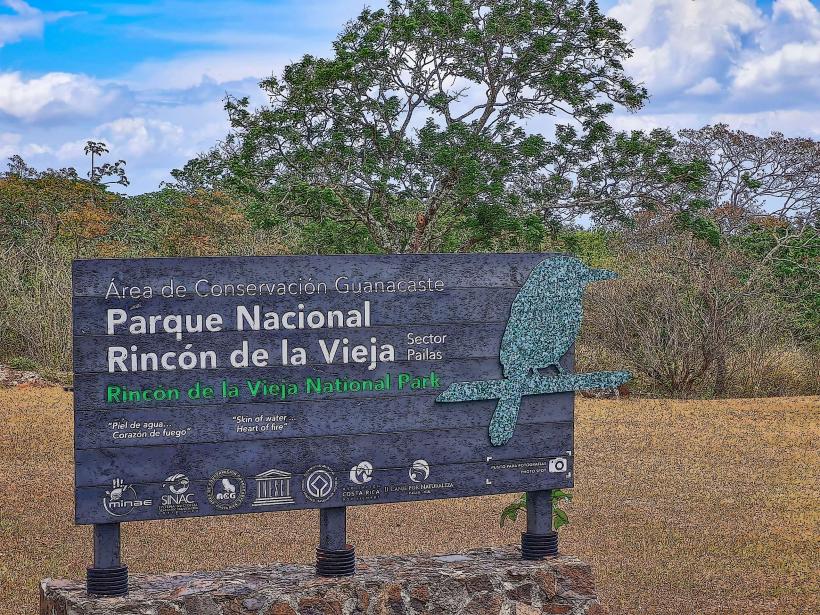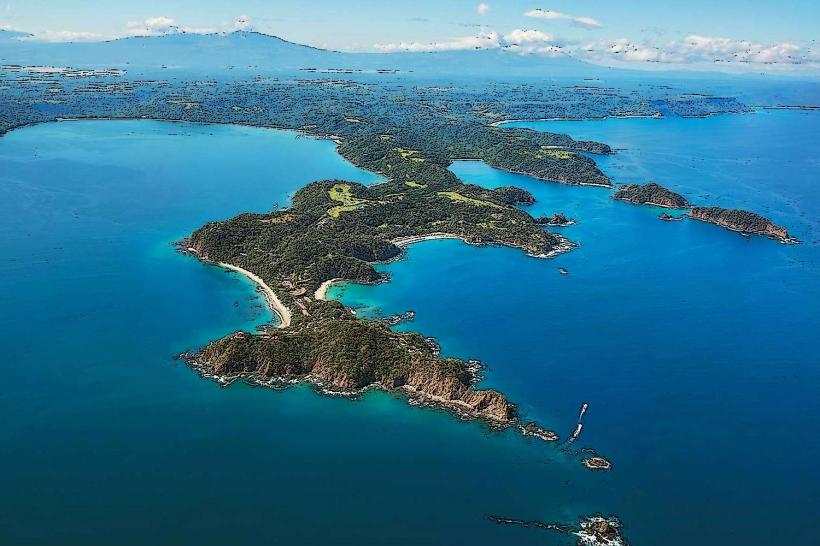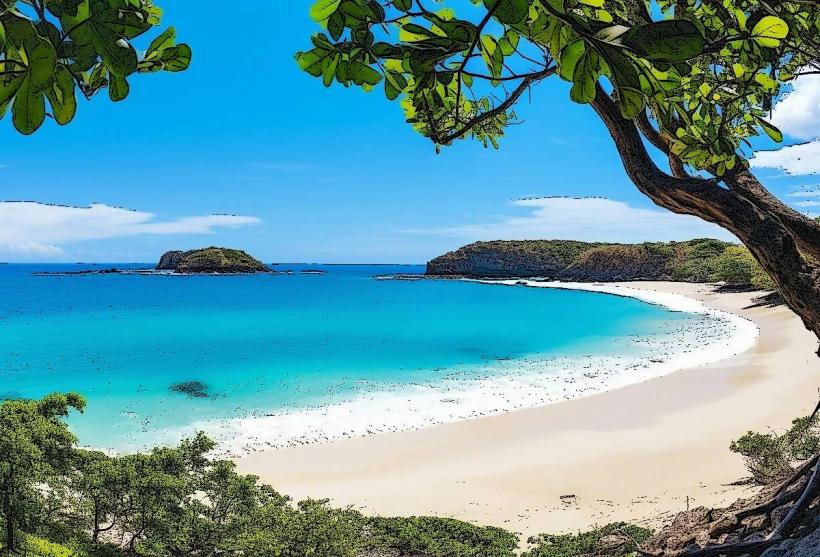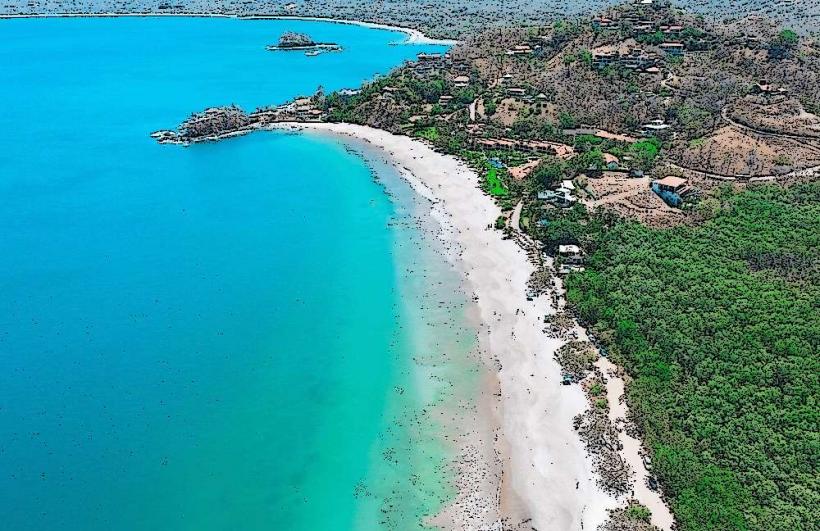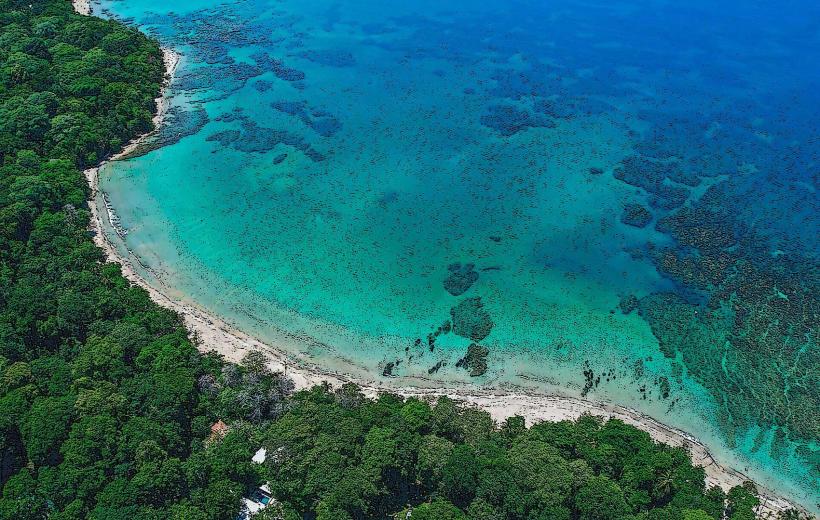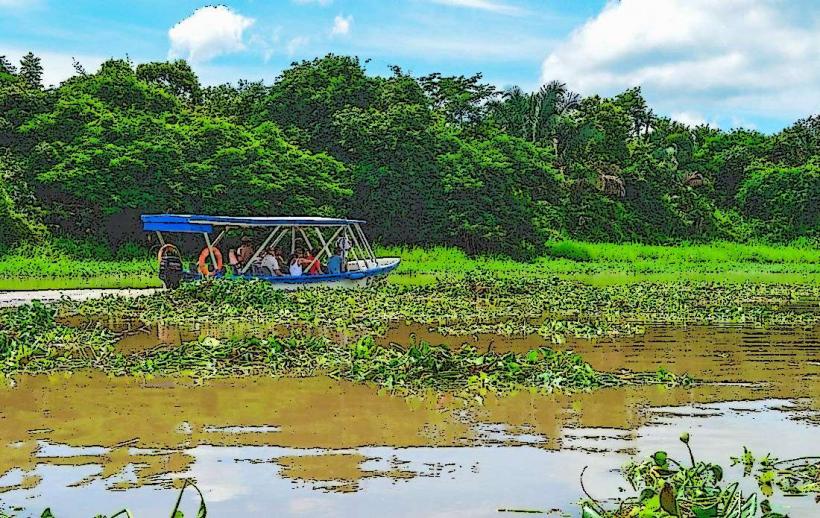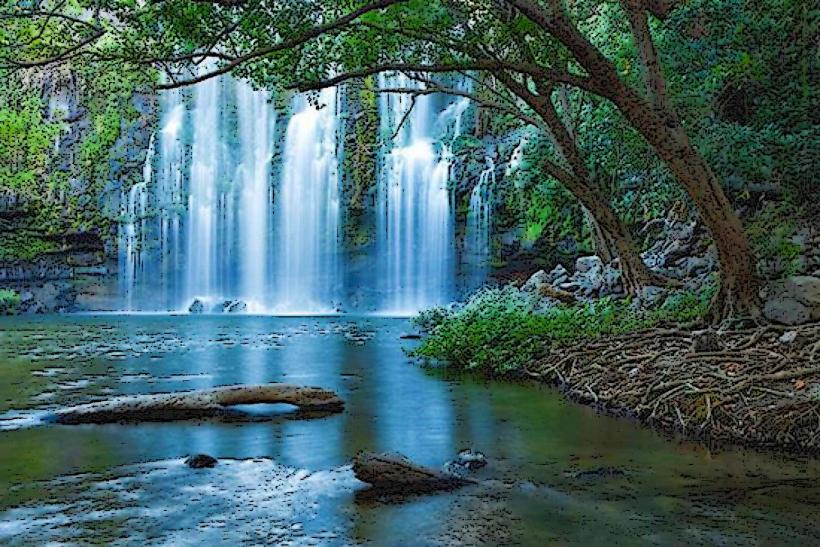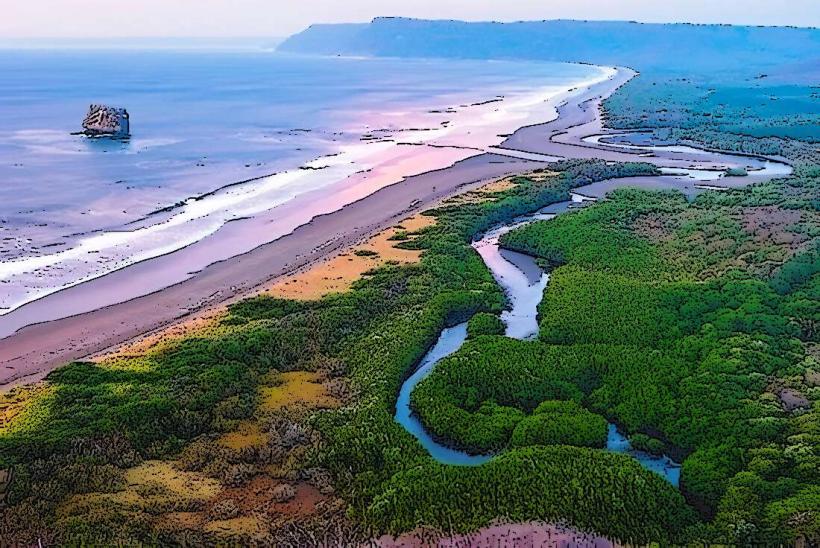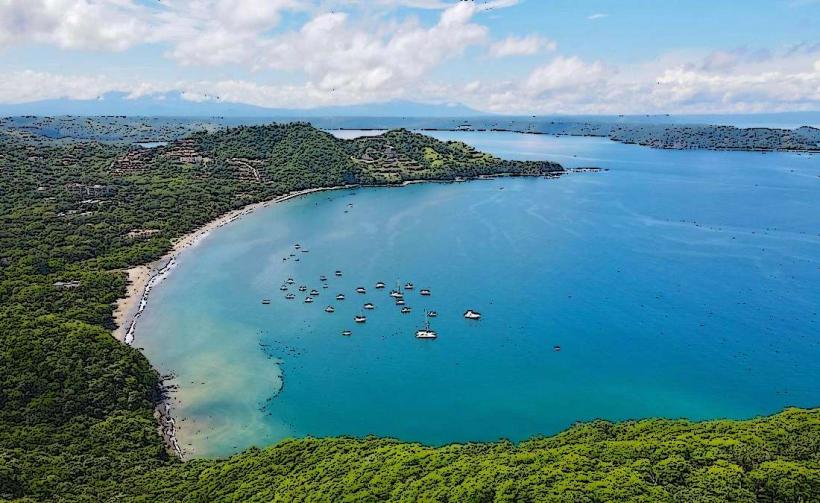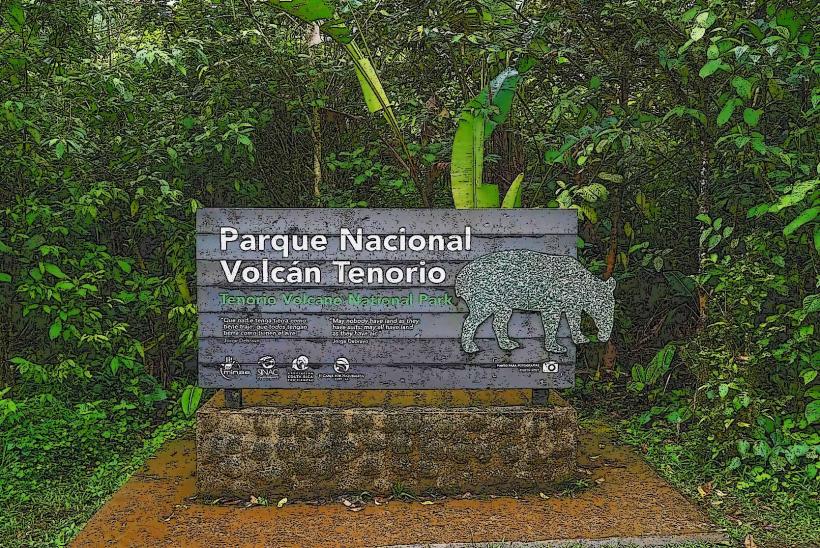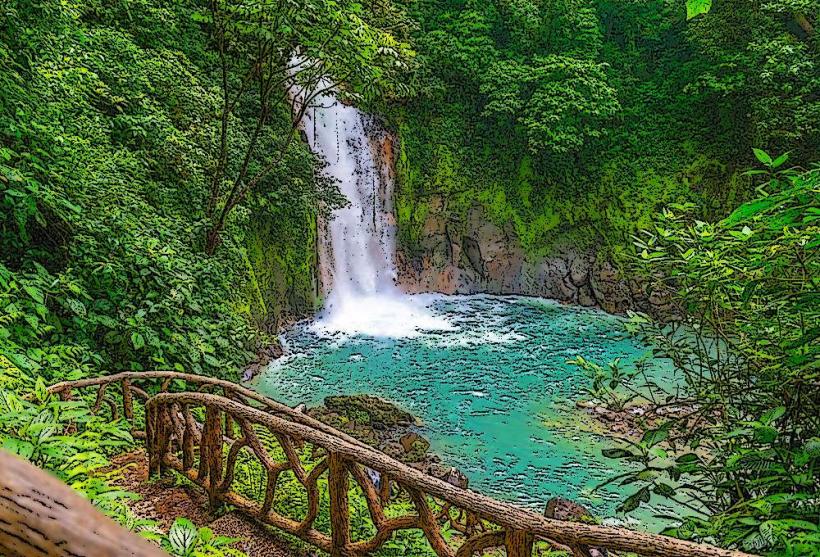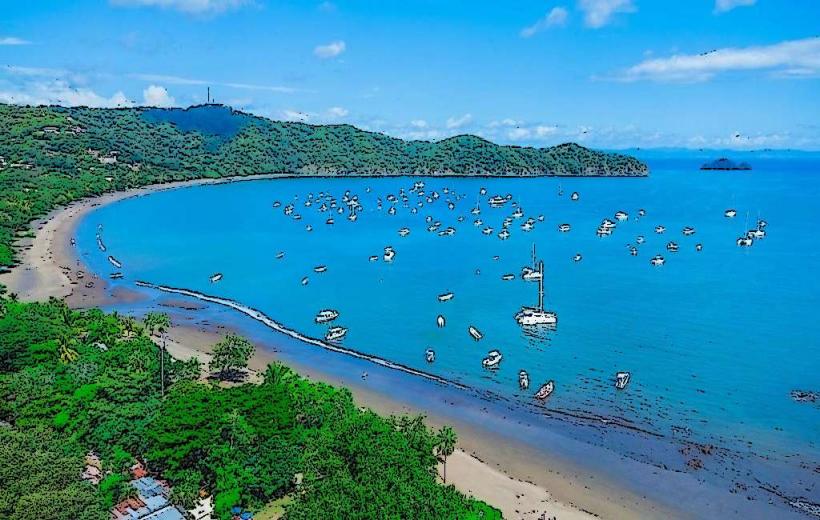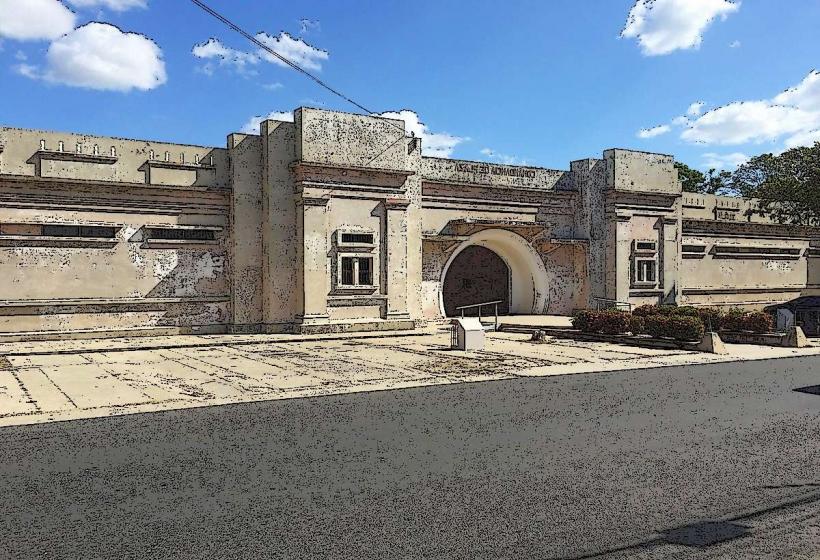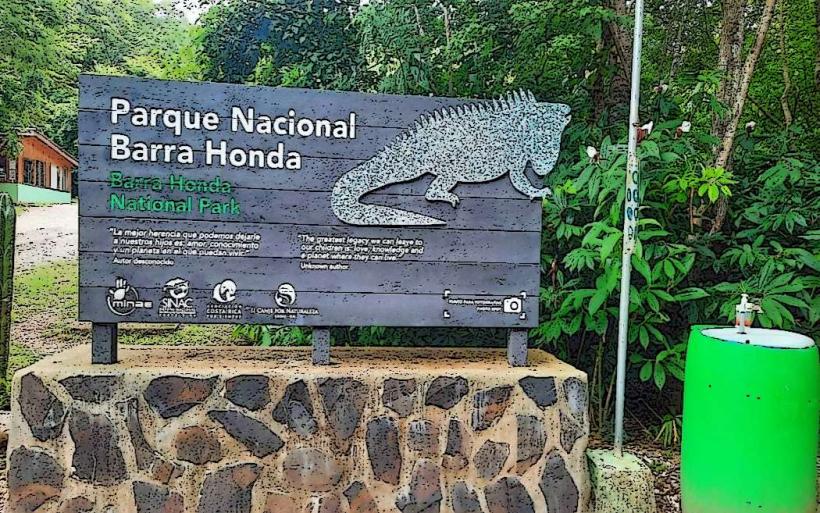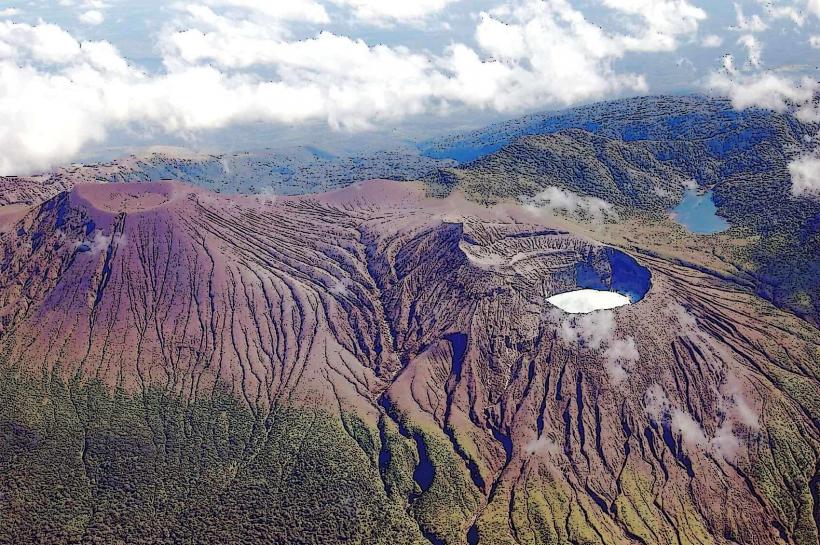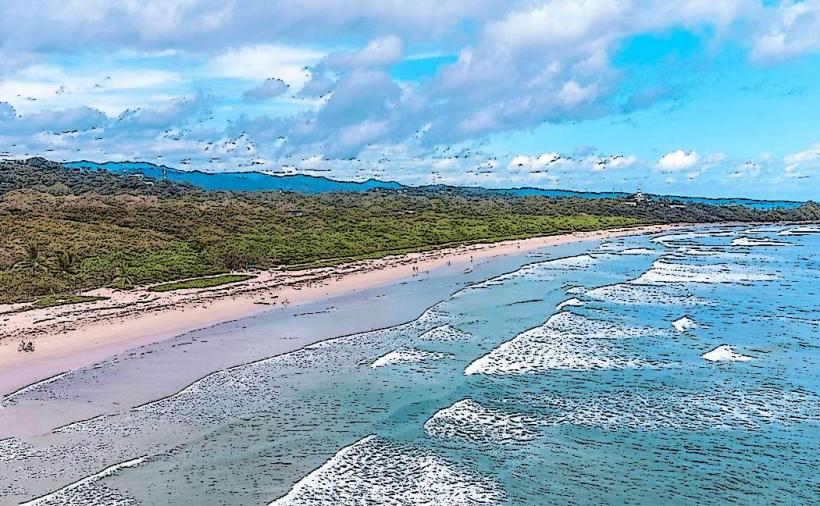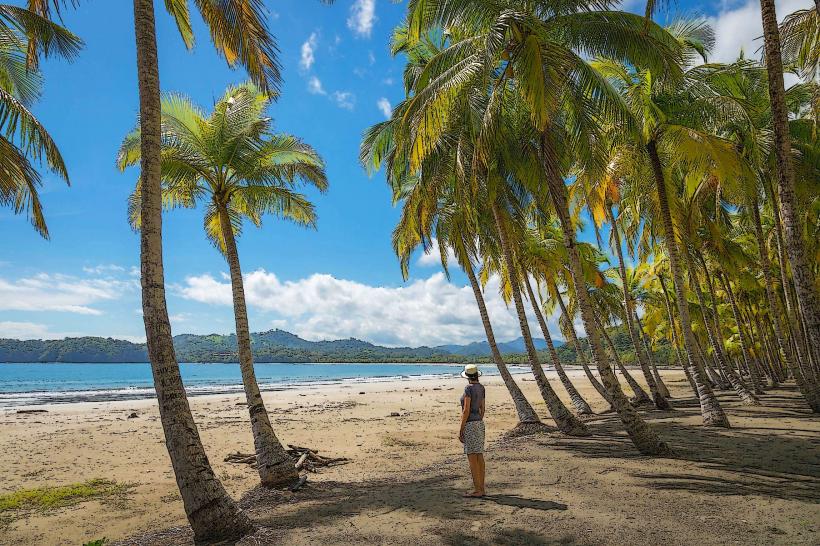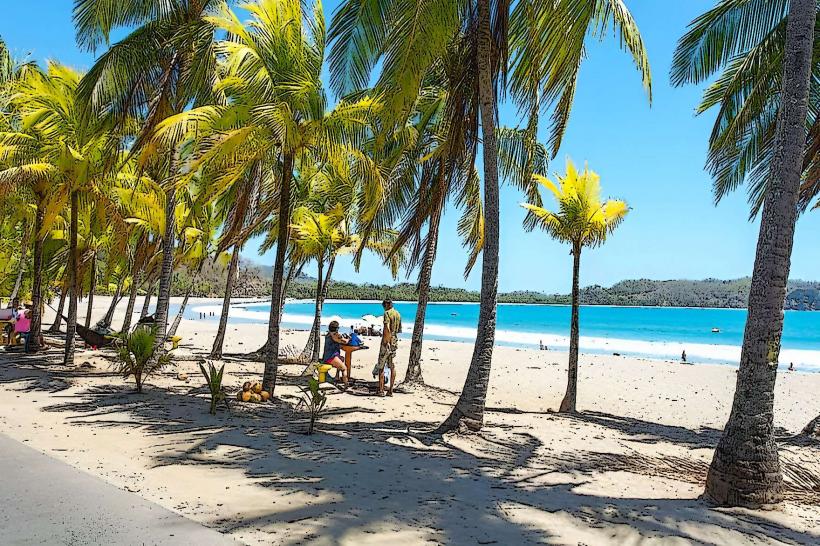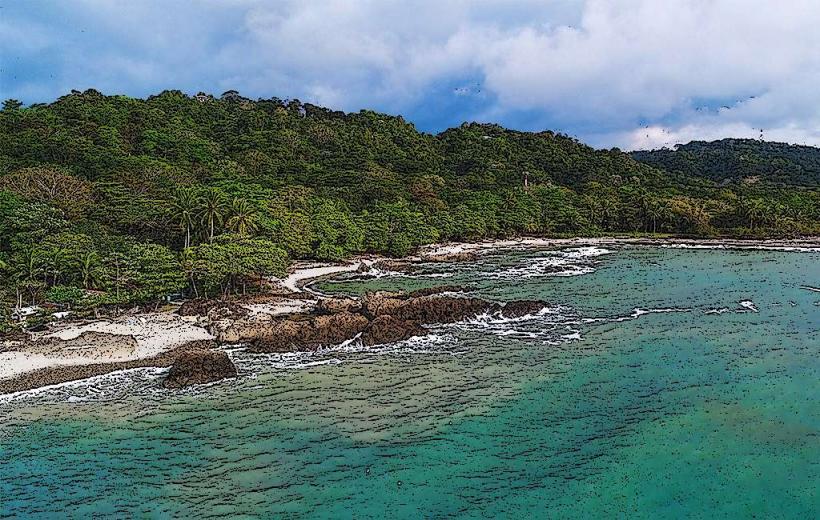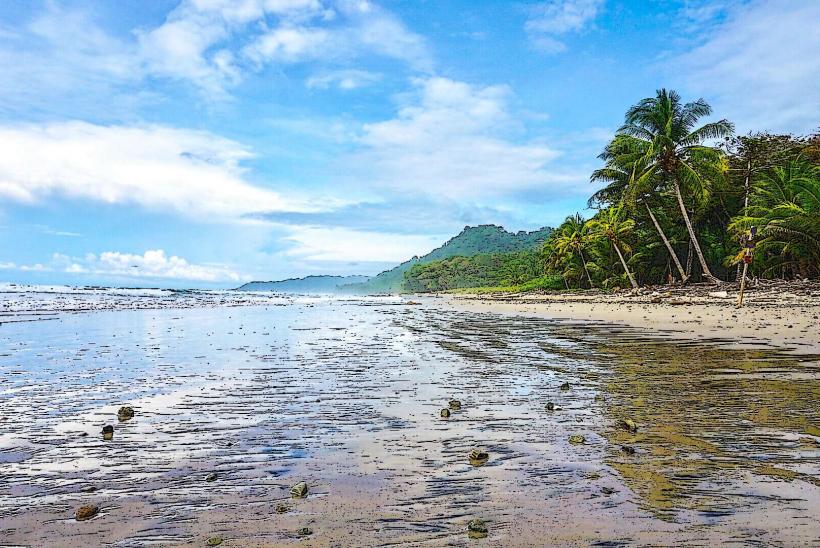Information
Landmark: Tenorio VolcanoCity: Guanacaste
Country: Costa Rica
Continent: North America
Tenorio Volcano is an active stratovolcano located in the northern part of Costa Rica, within the Tenorio Volcano National Park. The volcano is famous for its striking blue river, Rio Celeste, which flows through the park, making it a popular destination for tourists interested in natural beauty, hiking, and wildlife.
Geography and Location
- Location: Tenorio Volcano is located in the Northwest part of Costa Rica, within the Guanacaste Province, and it is a part of the Cordillera de Tilarán mountain range.
- Elevation: The volcano stands at 1,916 meters (6,286 feet) above sea level.
- Topography: The landscape around Tenorio is characterized by cloud forests, rainforests, and highland ecosystems, with a mix of volcanic terrain, lush vegetation, and flowing rivers. The area around Tenorio is also rich in geothermal activity, with hot springs, fumaroles, and other volcanic features.
Tenorio Volcano
- Active Stratovolcano: Tenorio is an active but generally peaceful stratovolcano. Its eruptions have been minor in recent history, with the last recorded eruption occurring around 2,000 years ago. Today, it is considered an inactive volcano, though geothermal activity is still present in the area.
- Crater and Geothermal Activity: The Tenorio Volcano has a relatively large crater and is still an active geothermal site. Visitors to the region can witness steam vents, hot springs, and fumaroles, which are a reminder of the volcano's active nature.
- Rio Celeste: One of the main highlights of Tenorio Volcano is Rio Celeste, a river that flows through the park. The river is famous for its striking turquoise-blue color, caused by the high concentration of minerals and chemical reactions that occur in the volcanic waters. This river is a major attraction for visitors who come to see its unusual hue and the surrounding natural beauty.
Ecological Significance
The region around Tenorio Volcano is home to a variety of ecosystems, from highland rainforests to tropical wet forests. These ecosystems are rich in biodiversity and provide habitats for numerous species of flora and fauna.
Flora:
- The park is home to rainforests and cloud forests at varying elevations, with a diverse range of plant species. At higher elevations, visitors will find oak trees, cedar, and mountain plants like bromeliads and orchids.
- As you descend into the lower parts of the park, the vegetation changes to lush tropical rainforest, home to trees like guanacaste, ceiba, and rainforest palms.
- The Rio Celeste area has unique vegetation, with mosses, ferns, and epiphytes thriving in the misty conditions around the river.
Fauna:
- Birds: The park is a haven for birdwatchers, with species such as Resplendent Quetzal, trogons, hummingbirds, and mountain robins commonly found in the cloud forests. The park is also home to woodpeckers, toucanets, and motmots.
- Mammals: The region around Tenorio is home to a variety of mammals, including howler monkeys, white-faced capuchin monkeys, spider monkeys, and coatis. Larger mammals such as pumas, ocelots, and jaguars are also found in the park, though they are rarely seen.
- Reptiles and Amphibians: The park has a significant population of reptiles and amphibians, including frogs like the red-eyed tree frog and glass frogs, and snakes like the fer-de-lance and boa constrictors.
- Insects: The rainforest around Tenorio Volcano is rich in insect life, with numerous species of butterflies, beetles, dragonflies, and fireflies.
Activities in Tenorio Volcano National Park
Hiking Trails:
- Rio Celeste Trail: This is the most popular trail in the park, leading visitors to the source of the Rio Celeste and offering stunning views of the river and surrounding rainforest. The hike takes about 2-3 hours and includes a series of viewpoints, waterfalls, and natural hot springs.
- Laguna Azul Trail: This trail leads to Laguna Azul, a serene blue lagoon located at the base of the Tenorio Volcano. The trail takes visitors through dense forest and offers beautiful views of the surrounding landscape.
- Los Teñideros Trail: This trail takes visitors to the source of the Rio Celeste, where the river turns its iconic blue color due to a chemical reaction between the volcanic minerals and the water. The hike to this spot is relatively short but is one of the highlights of the park.
Rio Celeste:
- The Rio Celeste is the main attraction at Tenorio Volcano National Park. The river's distinctive turquoise-blue color is a natural phenomenon caused by a chemical reaction between sulfur and calcium carbonate in the volcanic waters. Visitors can hike to the Los Teñideros to witness the spectacular blue color where the river is formed, or visit Rio Celeste Waterfall, which cascades down into the river.
- Swimming in the river is not permitted due to the acidity and mineral content, but visitors can enjoy the scenery and take photographs of the vibrant blue waters.
Waterfalls:
- Rio Celeste Waterfall: One of the most picturesque spots in the park, the Rio Celeste Waterfall plunges about 30 meters (98 feet) into a natural pool. The waterfall is surrounded by lush forest, and the vivid blue color of the river adds to the beauty of the scene. There is a viewpoint and a trail that leads to the base of the waterfall.
- Other waterfalls can be found along the hiking trails, including smaller cascades and natural springs.
Geothermal Features:
- Visitors to Tenorio Volcano National Park can also explore the geothermal activity around the volcano, including fumaroles (steam vents) and natural hot springs. These features are especially notable in the lower sections of the park, where the volcanic heat is still active.
Wildlife Watching:
- With its rich biodiversity, Tenorio Volcano National Park is a great place for wildlife watching, especially birdwatching. There are opportunities to see various species of monkeys, birds, and frogs, as well as larger mammals if you're lucky.
Practical Information
Best Time to Visit:
- The best time to visit Tenorio Volcano is during the dry season, from November to April. During this time, trails are easier to navigate, and the river's color is most vibrant due to lower rainfall.
- The rainy season (May to October) brings lush greenery and fewer crowds, but trails can be muddy and slippery.
Access:
- Tenorio Volcano National Park is located about 1.5 to 2 hours from La Fortuna (Arenal Volcano) or Liberia. The park is accessible by car along a dirt road, and there is a visitor center at the park entrance.
Entrance Fees:
- There is an entrance fee to Tenorio Volcano National Park, which helps with conservation efforts. Fees vary based on nationality and age, with discounts for children and students.
- Guided tours are available and are recommended for a more informative and enriching experience, as guides can explain the park’s biodiversity and geological features in detail.
What to Bring:
- Sturdy hiking shoes for the trails.
- Waterproof clothing or a poncho (especially during the rainy season).
- Insect repellent and sunscreen.
- Camera for capturing the stunning blue river and waterfalls.
- Water and snacks for the hike, as there are no food services on the trails.
Conclusion
Tenorio Volcano is a remarkable destination for nature lovers, hikers, and photographers. The park's iconic blue river, geothermal features, lush forests, and diverse wildlife offer visitors an unforgettable experience. Whether you are exploring the trails, gazing at the Rio Celeste Waterfall, or simply soaking in the natural beauty, Tenorio Volcano National Park is a must-see destination in Costa Rica.

